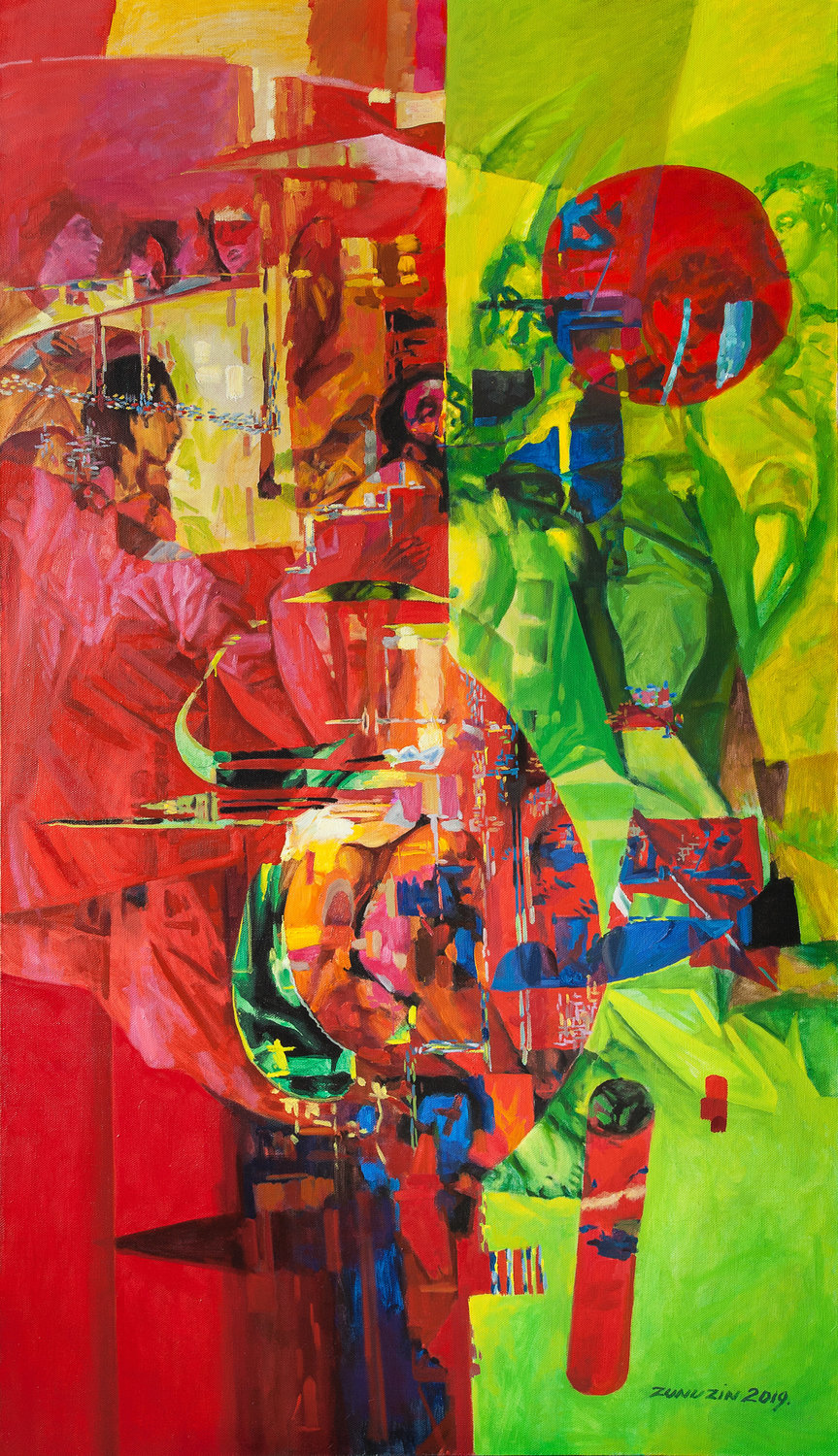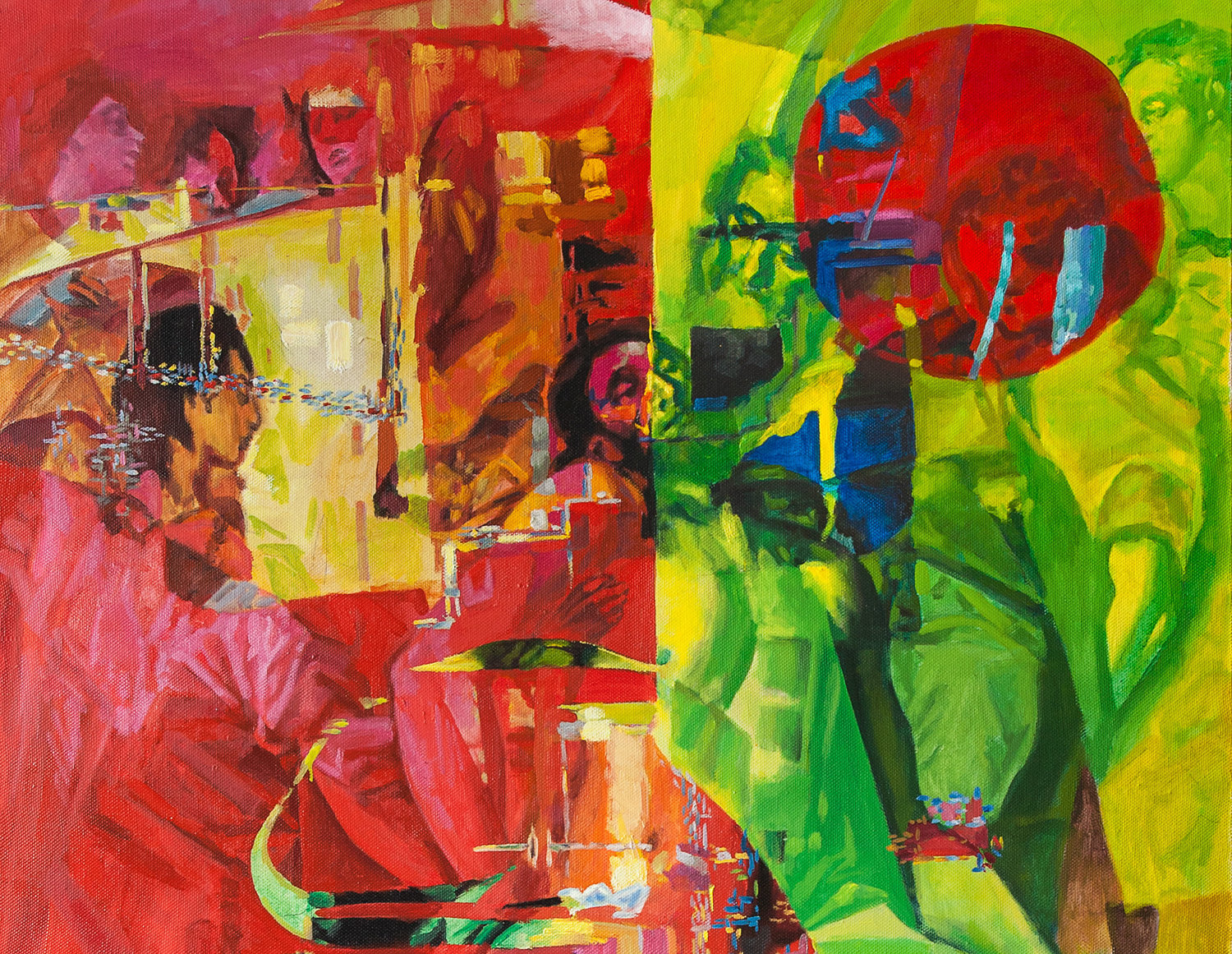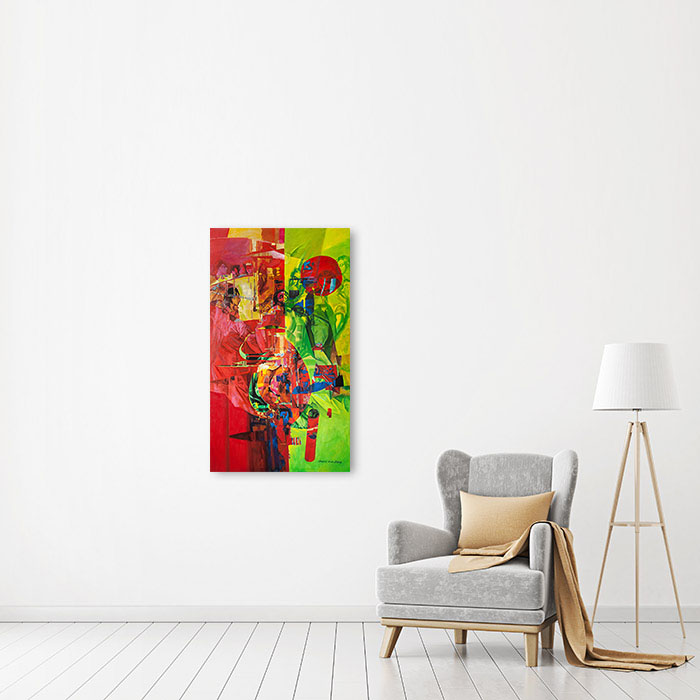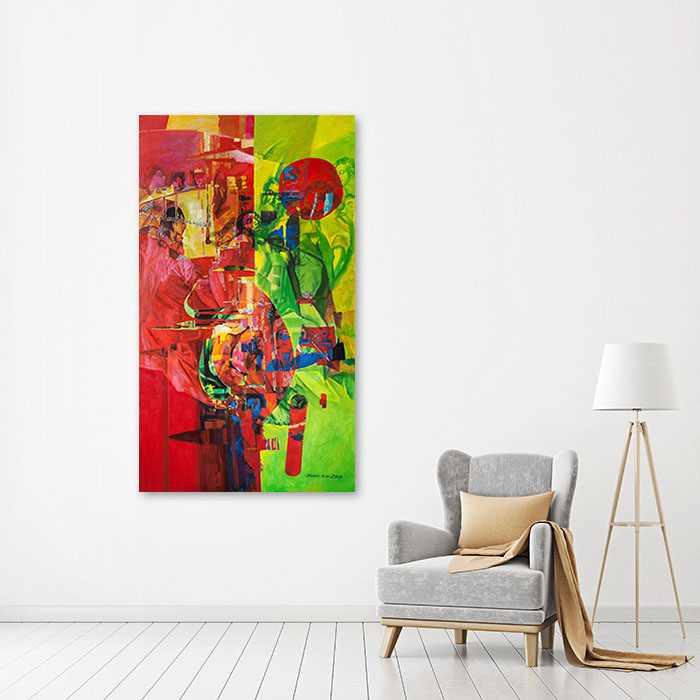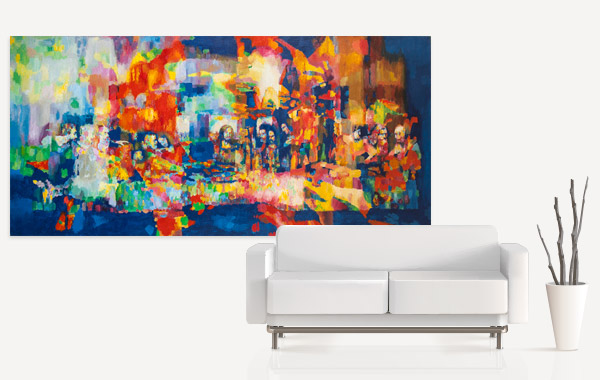The Trinity (El Greco Improvisation)
Print information
- Artwork printed by EPSON Stylus Pro 7880 (Epson Ultra Chrome K3 Vivid Magenta) on canvas.
- Limited edition prints of 100. Each artwork will be individually printed, signed, dated and numbered by the artist Vladimir Zunuzin.
Payment and delivery
- Payments by Paypal or 2Checkout.
- Free worldwide shipping with tracking. Will usually ship within 3-5 business days.
- Year created: 2019
- Medium: oil on canvas
- Dimensions (cm): 200x115
Improvisation on The Trinity by El Greco translates the sacred theme into a vibrant explosion of color and fragmented geometry. The canvas is split between luminous reds and radiant greens, creating a duality that mirrors the tension between the earthly and the divine. Figures emerge through shifting layers, their forms half-recognizable, suspended between abstraction and revelation.
At the heart of the piece, circular and linear elements intersect, suggesting both cosmic harmony and spiritual unity. The bold red sphere at the center pulses with energy, evoking divine presence and eternal light. Around it, fragmented human faces and gestures flicker into view, as though the holy mystery is glimpsed only in fractured visions.
The improvisation refuses fixed form, instead offering a meditation on transcendence through rhythm and color. It dissolves El Greco’s elongated figures into radiant fields, yet preserves the gravity of the theme: the unfathomable mystery of the divine expressed as an eternal interplay of light, spirit, and creation.
